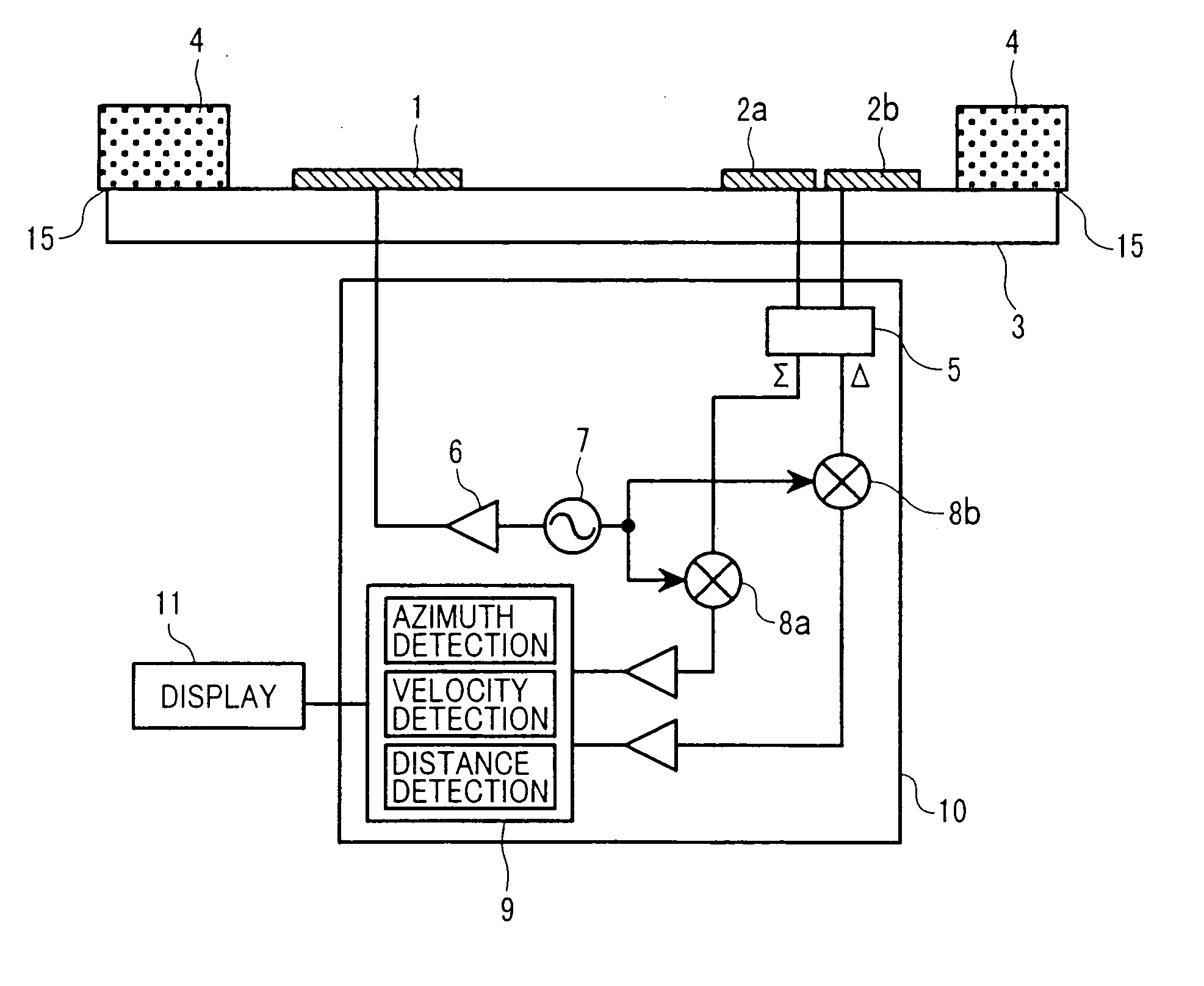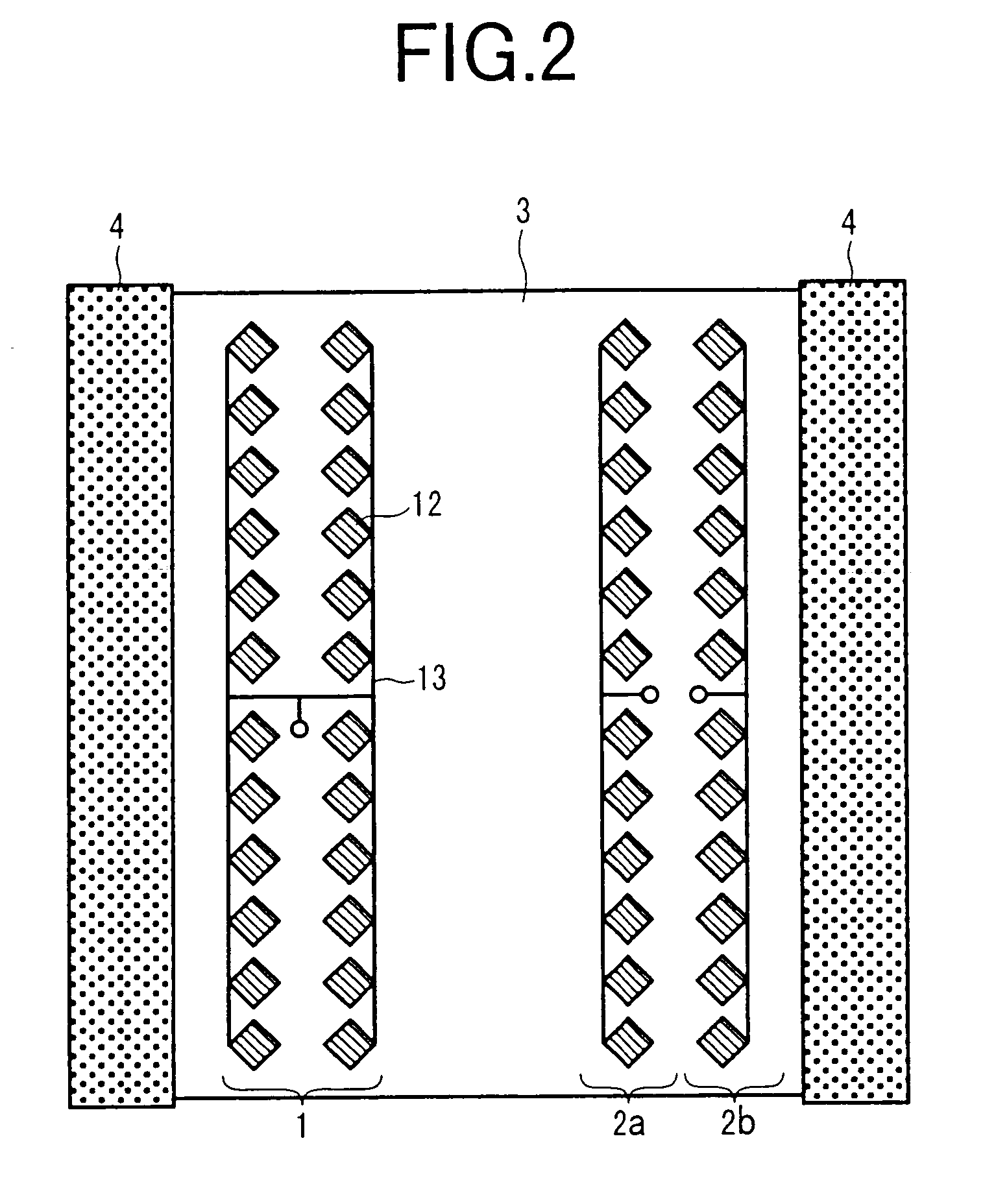Automotive radar
a technology for autos and radars, applied in wave based measurement systems, instruments, reradiation, etc., can solve the problems of increasing unnecessary sidelobes, significant deterioration of azimuth accuracy, and wrong detection, and achieves a high level of azimuth accuracy. , the effect of easy production in light weigh
- Summary
- Abstract
- Description
- Claims
- Application Information
AI Technical Summary
Benefits of technology
Problems solved by technology
Method used
Image
Examples
first embodiment
[0032]FIG. 2 shows a top view of the antennas used in the invention. A plurality of patch elements 12 and feeding lines 13 are configured over a dielectric substrate to constitute the transmitting array antenna 1 and the receiving array antennas 2a and 2b. Each of these array antennas is arranged on the antenna plate 3, and the radio wave absorbers 4 are arranged on the two sides of the edges 15 of the antenna plate 3.
[0033] In case of the absence of the radio wave absorbers 4, the reflected wave which has been Doppler-shifted by the obstacle and returned, would be diffracted by the edges 15 of the antenna plate 3 and become scattering unnecessary waves, part of which would come incident on the receiving array antennas 2a and 2b, but in this embodiment of the invention the reflected waves directed towards the edges 15 are absorbed by the radio wave absorbers 4 and thereby prevented from reaching the edges 15. Therefore, the generation of unnecessary waves by diffraction is prevented...
second embodiment
[0039] In this embodiment of the invention, as in the second embodiment, the whole edges of the antenna plate 3 are covered by the radio wave absorbers, and accordingly the absorption can be effective against diffracted waves not only in the lateral but also longitudinal direction of the drawing, with the result that wrong detection can be prevented and a high level of azimuth accuracy can be achieved.
[0040] Hereupon, the optimal positions and size of the radio wave absorbers 4 relative to the transmitting antenna 1 will be explained with reference to FIG. 5. The transmitting array antenna 1 and the radio wave absorbers 4 are arranged on the antenna plate 3, and a main beam mb having a radiation angle 2θ required for achieving a desired azimuth detecting performance is supplied from the transmitting array antenna 1. Then, assuming that the antenna 1 is thin enough, the optimal values of the height H of the radio wave absorbers 4 from the top face of the antenna 1 and of the distance...
PUM
 Login to View More
Login to View More Abstract
Description
Claims
Application Information
 Login to View More
Login to View More - R&D
- Intellectual Property
- Life Sciences
- Materials
- Tech Scout
- Unparalleled Data Quality
- Higher Quality Content
- 60% Fewer Hallucinations
Browse by: Latest US Patents, China's latest patents, Technical Efficacy Thesaurus, Application Domain, Technology Topic, Popular Technical Reports.
© 2025 PatSnap. All rights reserved.Legal|Privacy policy|Modern Slavery Act Transparency Statement|Sitemap|About US| Contact US: help@patsnap.com



